From the Jomon era to the Edo era and right up to the present day,
Hachinohe has flourished as the heart of the Nanbu Region of Aomori.
Its history has been handed down in an unbroken line from ancient times to create the modern Hachinohe.
Jomon Culture in Hachinohe
Humans have lived in the Hachinohe region since roughly 20,000 years ago, during the Paleolithic era. The many late Jomon-era artifacts excavated at locations such as the Korekawa Historic Site and the Kazahari Historic Site, as well as the remains of large-scale settlements, indicate that many people lived and flourished in the area during the Jomon era.
A high level of artistry is characteristic of these artifacts, which include the “Gassho Clay Figure” National Treasure
Displayed at the Hachinohe Archaeological Institution Korekawa Jomon Kan, the artifacts remind us of ancient times.
» The Hachinohe Archaeological Institution Korekawa Jomon Kan
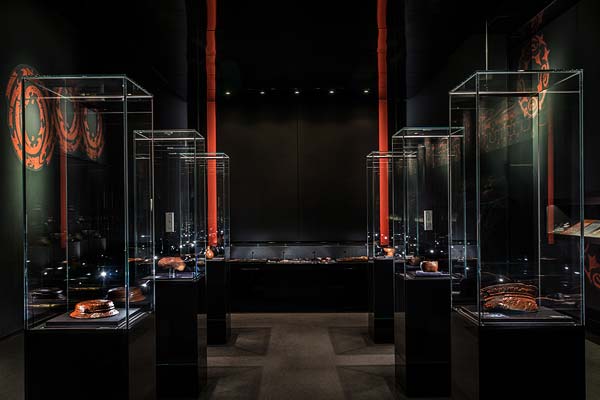
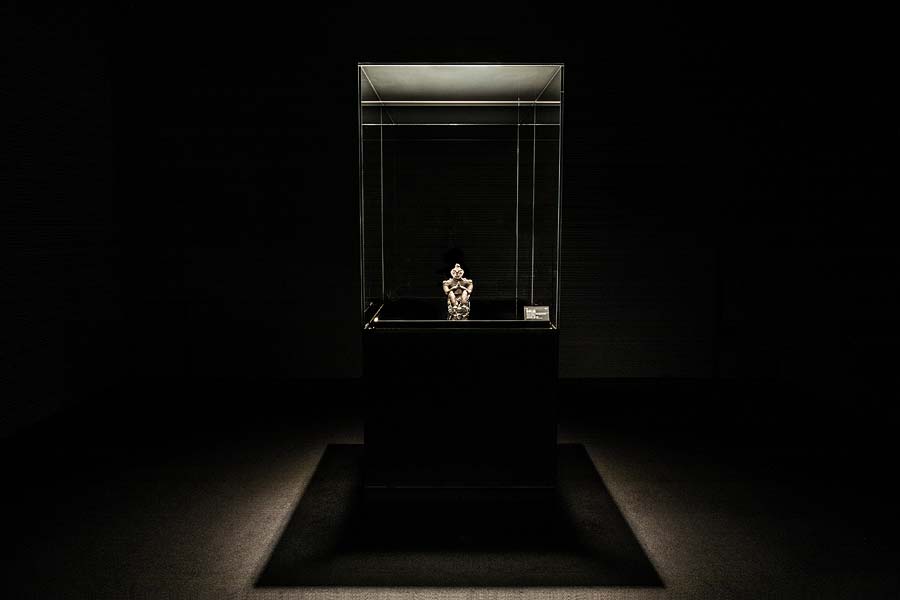
The origin of “nohe” (戸)
Place names that include “nohe” preceded by a number remain in the area ranging from southern Aomori prefecture to northern Iwate prefecture. The word “nohe” is thought to have meant settlements and administrative divisions, formed under the governance of the Oshu Fujiwara clan of Hiraizumi. There are also theories that it meant horse pastures or bases for Emishi governance.
Remaining place names using “nohe” plus a number
Ichinohe(#1)–Iwate Prefecture Ichinohe-machi ・ Ninohe (#2)–Iwate Prefecture Ninohe-shi ・ Sannohe (#3)–Aomori Prefecture Sannohe-machi ・ Gonohe (#5)–Aomori Prefecture Gonohe-machi ・ Rokunohe (#6)–Aomori Prefecture Rokunohe-machi ・ Shichinohe (#7)–Aomori Prefecture Shichinohe-machi ・ Hachinohe(#8)–Aomori Prefecture Hachinohe-shi ・ Kunohe (#9)–Iwate Prefecture Kunohe-mura *Nowadays there is no “Shinohe” (#4), but it is thought to have been the area around Kushihiki Hachiman-gu Shrine in Yawata-Cho, Hachinohe City.
「Yoshitsune’s Flight North 」 A Legendary Tale from Hachinohe
For more than 800 years the people of Hachinohe have passed down stories about Yoshitsune Minamoto. Yoshitsune is one of Japan’s most famous warriors. He is known for his conquests and exploits during the Genpei War and his tragic death by suicide at Hiraizumi in Iwate. But according to a series of legends found strewn across the Tohoku region, instead of dying in Iwate, Yoshitsune survived and escaped north. Throughout Hachinohe, some places are said to have connections to the famous warrior and the stories detailing his adventures have been passed through generations from centuries before and even unto this day.
The Nejo-Nanbu clan, founders of Hachinohe
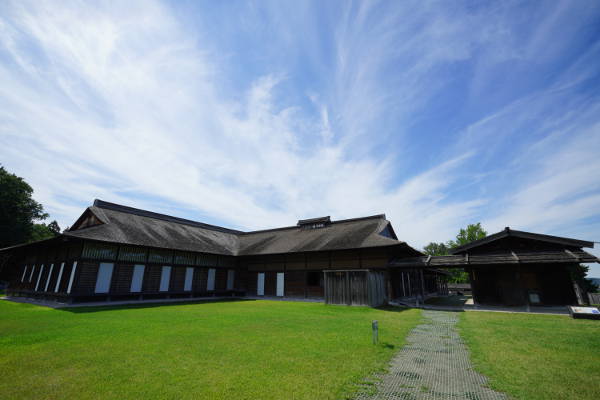
The connection between Hachinohe and the Nanbu clan is said to have begun during the period of Northern and Southern Courts, when Moroyuki Nanbu came from Kai Province (present-day Yamanashi Prefecture) to make Nejo his base, thereby establishing the Nejo-Nanbu clan. After that, the Nejo-Nanbu clan ruled the Hachinohe region while also playing an important role as a chief vassal to the Sannohe (Morioka) Nanbu clan, the eldest branch of the Nanbu clan.
Built in 1334 as a flat castle divided into eight sections including the castle proper, Nejo Castle flourished as the center of the Hachinohe region for about 300 years until the Nanbu Clan was relocated to Tono in 1627. The castle ruins have been restored and are maintained as the Nejo Castle Historical Site, allowing us in the present day to see how Nejo Castle looked in the Azuchi-Momoyama era.
» The Nejo Castle Historical Site
» Hachinohe Enburi: A Folk-Tradition Passed Down through the Centuries
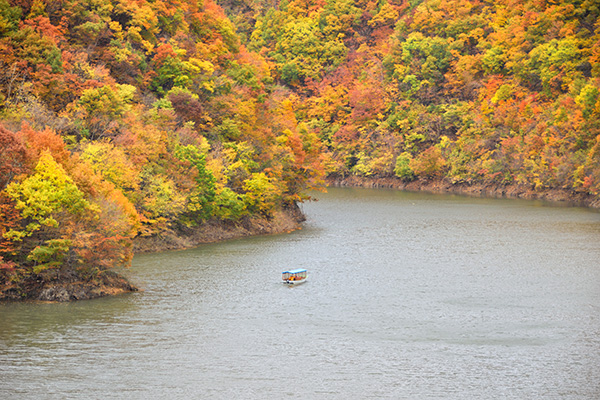
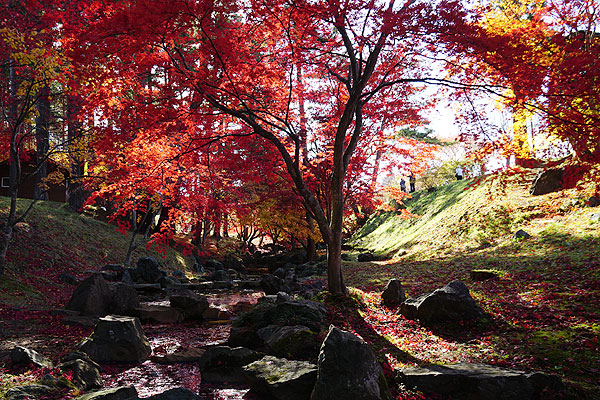
Birth of the Hachinohe Domain and establishment of the city
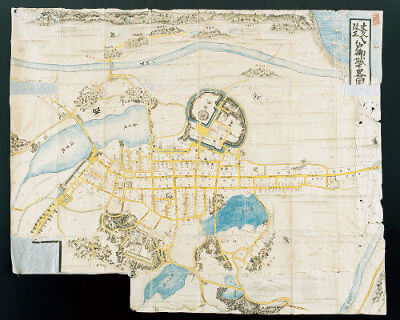
In the early Edo era, the Nejo-Nanbu clan was relocated to Tono by Toshinao Nanbu, the first feudal lord of the Morioka Domain, and Hachinohe, having lost its lord, was placed under the control of the Morioka Domain. As Hachinohe was a strategic transportation and trade point, Toshinao developed the city himself. Even now it is said that the foundations of Hachinohe’s characteristic market-day townscape were established at that time.
Because Shigenao, the second Morioka Domain feudal lord, died in Edo without designating an heir, in 1664 the Shogun gave the 80,000-koku Morioka Domain to Shigenao’s younger brother and the 20,000-koku Hachinohe Domain to Shigenao’s brother Naofusa. In this way, the independent domain of Hachinohe was born. The Hachinohe Domain survived for nine generations, overcoming famines and natural disasters, and its resilience was passed down to Hachinohe prefecture in the Meiji era and the birth of the city of Hachinohe in the Taisho era.
»A Festival from the Hachinohe Domain Era「The Hachinohe Sansha Taisai」
「The Three National Treasures in Hachinohe」
The “Gassho Clay Figure” National Treasure
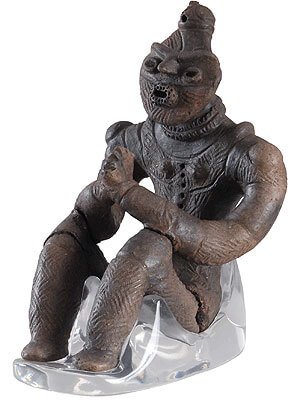
Gassho Clay Figure sits with hands clasped, elbows resting on her raised knees. This realistic form provides an image of the customs of the Jomon era, and we can give the impression that she is praying for something such as the prosperity of her descendants.
The clay figure is very unusual as no others have been found and, as the shape is thought to be customary for the times It is extremely valuable and was designated a National Treasure in 2009.
It is from the late second half of the Jomon era (about 3,500 years ago). It was unearthed at the Kazahari 1 site. Korekawa Jomon Kan
(Held at / The Hachinohe Archaeological Institution Korekawa Jomon Kan)
The Akaito-Odoshi Yoroi
(armor laced with red threads) National Treasure
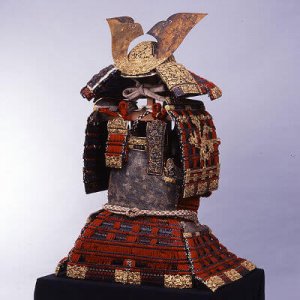
This suit of armor is recognized as an excellent example of Japanese armor, with its magnificent ornamentation typical of late-Kamakura era designs. It is also known as “chrysanthemum-design armor” because its large sleeves and helmet are decorated with chrysanthemum design.
(Held at / Kushihiki Hachiman-gu Shrine)
The Shiroito-Odoshi Tsumadori Yoroi
(armor with white triangular-patterned thread lacing) National Treasure
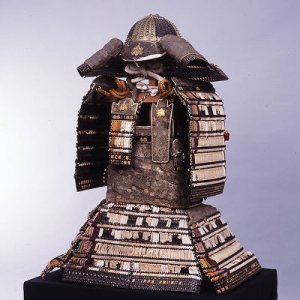
This elegant armor, typical of the period of the Northern and Southern Courts, has a white background decorated with threads in colors such as purple, lavender, yellow, pale green and red. It is said to have been bestowed upon Nobumitsu Nanbu of the Nejo-Nanbu clan by Emperor Go-Murakami.
(Held at / Kushihiki Hachiman-gu Shrine)
